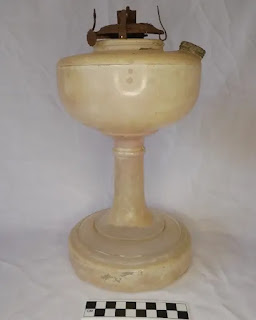The exhibition is named in honour of Mrs Lestel Downs, a native historian, environmentalist, midwife, and nurse whose life and work contributed immensely to the community and cultural memory of the Corn Islands.
The exhibition explores the post-colonial history of the Corn Islands, defined here as the period from 1894 to 1994. During this century, the islands underwent significant political and sociocultural transformations following their transition from British to Nicaraguan rule. These changes shaped key aspects of the local identity recognised today.
Through a curated selection of relics and historical materials, this exhibition invites visitors to reflect on the interplay of national Hispanic influences and broader Caribbean cultural currents that marked this era.
Carved Coconut Head
Period: 1960s-1970s
Location: Culture House, Great Corn Island
Digital Number: TCISVM-7010
Photo by: Cristian Figueroa
Crafted in the early 2010s by renowned Corn Island artisan Whitney Lam (RIP), this piece reflects a tradition that dates back to the 1960s-1970s. Inspired by styles handed down from other Caribbean territories, it captures island creativity and cultural pride through local materials.

Washboard
Period: 1800s to mid-1900s
Location: Culture House, Great Corn Island
Digital Number: TCISVM-7011
Photo by: Cristian Figueroa
This wooden washboard was once a common household tool on the Corn Islands, used to scrub clothes by hand before modern washing machines. It reflects an era of simplicity and self-sufficiency in island life during earlier decades.

Porcelier Teapot
Period: 1930s-1950s
Location: Culture House, Great Corn Island
Digital Number: TCISVM-7012
Photo by: Cristian Figueroa
This porcelain teapot was imported from the United States and reflects the historical connection between the Corn Islands and the USA during the 20th century. Its decorative design blends everyday function with the charm of American household goods of the era.

Aladdin Oil Lamp
Period: 1930s-1940s
Location: Culture House, Great Corn Island
Digital Number: TCISVM-7013
Photo by: Cristian Figueroa
This freestanding glass oil lamp, featuring a design typical of the 20th century, was used to light homes on the Corn Islands before electricity became widespread. Imported through trade, it reflects how island households adapted foreign items to meet local needs in daily life.

Kerosene Lantern
Period: 1950s-1980s
Location: Culture House, Great Corn Island
Digital Number: TCISVM-7014
Photo by: Cristian Figueroa
This metal kerosene lantern, common in the mid to late 20th century, was widely used on the Corn Islands before the arrival of stable electricity. Portable and durable, it reflects how families lit their homes, walked at night, or fished after dark using accessible and practical lighting solutions.

Whisky Bottle
Period: 1950s–1980s
Location: Culture House, Great Corn Island
Digital Number: TCISVM-7015
Photo by: Cristian Figueroa
Imported whisky bottles like this one, from Canada or the United States, were commonly reused on the Corn Islands to store homemade wine and other local drinks. This reuse reflects both the islanders’ creativity and the lasting imprint of foreign goods on local traditions.

Charcoal Iron
Period: 20th century
Location: Culture House, Great Corn Island
Digital Number: TCISVM-7016
Photo by: Cristian Figueroa
This type of iron was heated by placing hot coals inside the hollow chamber, allowing the base to retain heat for pressing clothes. The design was common throughout the 20th century and was widely used before the advent of electric irons.

Sieve Frame
Period: 20th century
Location: Culture House, Great Corn Island
Digital Number: TCISVM-7017
Photo by: Cristian Figueroa
This handmade sieve was traditionally used in local kitchens to strain coconut milk, a key ingredient in traditional dishes such as rice and beans. Made with a wooden frame and fine mesh, it reflects the resourcefulness and culinary customs passed down through generations on the Corn Islands.

Carved Coconut Head
Period: 1960s-1970s
Location: Culture House, Great Corn Island
Digital Number: TCISVM-7018
Photo by: Cristian Figueroa
This carved coconut head reflects a folk art tradition introduced to the Corn Islands from other Caribbean islands in the mid-1900s. Still made today, this piece was crafted by a local artisan, continuing a playful and creative cultural legacy.

Coconut Grater
Period: 17th-20th century
Location: Private Collection
Digital Number: TCISVM-7019
Photo by: The Corn Islands Virtual Museum
TThis traditional coconut grater is widely used across the Corn Islands and the Caribbean to grate coconut and extract its milk, a staple in many local dishes. Brought to the islands by Caribbean immigrants, likely enslaved or formerly enslaved people, it remains an enduring symbol of cultural resilience and culinary heritage. The tool continues to be used in island homes today.

